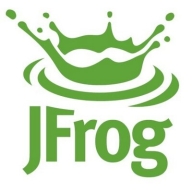

Azure Container Registry and JFrog Container Registry compete in the container image management category. Azure Container Registry has the upper hand with its seamless integration with Azure services and flexible pricing.
Features: Azure Container Registry offers seamless connectivity with Azure Kubernetes services, geo-replication capabilities, and flexibility in managing both Windows and Linux containers. JFrog Container Registry is noted for its comprehensive code scanning, multi-cloud support, and integration with JFrog Xray.
Room for Improvement: Azure Container Registry needs better deployment speed, a more intuitive interface, and improved image vulnerability scanning. JFrog Container Registry requires enhanced documentation, an optimized cost structure, and advanced security features like improved vulnerability scanning.
Ease of Deployment and Customer Service: Azure Container Registry is deployed mainly in public and private clouds with varying customer service levels. JFrog Container Registry supports hybrid clouds with effective customer service and responsive support.
Pricing and ROI: Azure Container Registry offers competitive pricing with flexible tier options, while JFrog Container Registry is seen as expensive with complex licensing but offers valuable ROI through operational efficiencies and robust multi-cloud features.
| Product | Market Share (%) |
|---|---|
| JFrog Container Registry | 29.0% |
| Azure Container Registry | 11.8% |
| Other | 59.2% |


| Company Size | Count |
|---|---|
| Small Business | 6 |
| Midsize Enterprise | 6 |
| Large Enterprise | 10 |
Azure Container Registry allows you to build, store, and manage container images and artifacts in a private registry for all types of container deployments. Use Azure container registries with your existing container development and deployment pipelines. Use Azure Container Registry Tasks to build container images in Azure on-demand, or automate builds triggered by source code updates, updates to a container's base image, or timers.
The JFrog Container Registry is a repository manager, which supports Docker and Helm registries and Generic repositories, allowing you to build, deploy and manage your container images while providing powerful features with fine-grained permission control behind a sleek and easy-to-use UI.
We monitor all Container Registry reviews to prevent fraudulent reviews and keep review quality high. We do not post reviews by company employees or direct competitors. We validate each review for authenticity via cross-reference with LinkedIn, and personal follow-up with the reviewer when necessary.